Not Your Average Grade 9 Science Class: How One Small New Brunswick School is Making a Big Impact
Jul 9, 2024
Across all grade levels, students and teachers in New Brunswick are making climate action a priority. Through climate education, students are engaging in practical, hands-on learning that graze diverse subjects and achieve curriculum outcomes. Increasingly, teachers and students are exploring their own school’s habits and practices, and applying creative solutions to the unique issues they identify. Sustainability is becoming a key component of school cultures and identities. Recently I had the opportunity to visit one of these schools in Springfield, New Brunswick.
Tucked away amongst rolling hills, patches of forest, and picturesque lakes, sits Belleisle High School. Student-painted lockers line the hallways, all of which are thoughtfully designed and meticulously themed and decorated. Belleisle High School had been participating in our Climate Action Program (Science), and today was presentation day.
My colleague and I had arrived before the start of class. We were greeted by a tray of snacks, fresh from the oven, and appreciated the warm welcome. We made our way to Ms. Giddens’ classroom where we met her grade 9 science class students. The students were polite, friendly, and eager to show us the projects they had been working on as part of The Gaia Project’s Climate Action Project program.
Let’s pause for a moment.
At The Gaia Project we often hear about schools implementing sustainability initiatives, and sometimes they’re pretty creative. In this case I really didn’t know what I’d be in for. Afterall, when I was in grade 9, my science projects consisted of Bristol board and an obscene about of glitter glue (it’s no wonder I pursued the arts rather than science)!
Moving on.
The students began by leading us outside, through the art-covered, locker-lined hallways. It was a warm, sunny afternoon. One that reminded you that summer was almost within reach, and the school year would be wrapping up in just a few weeks.
We arrived at the first location: the greenhouse.
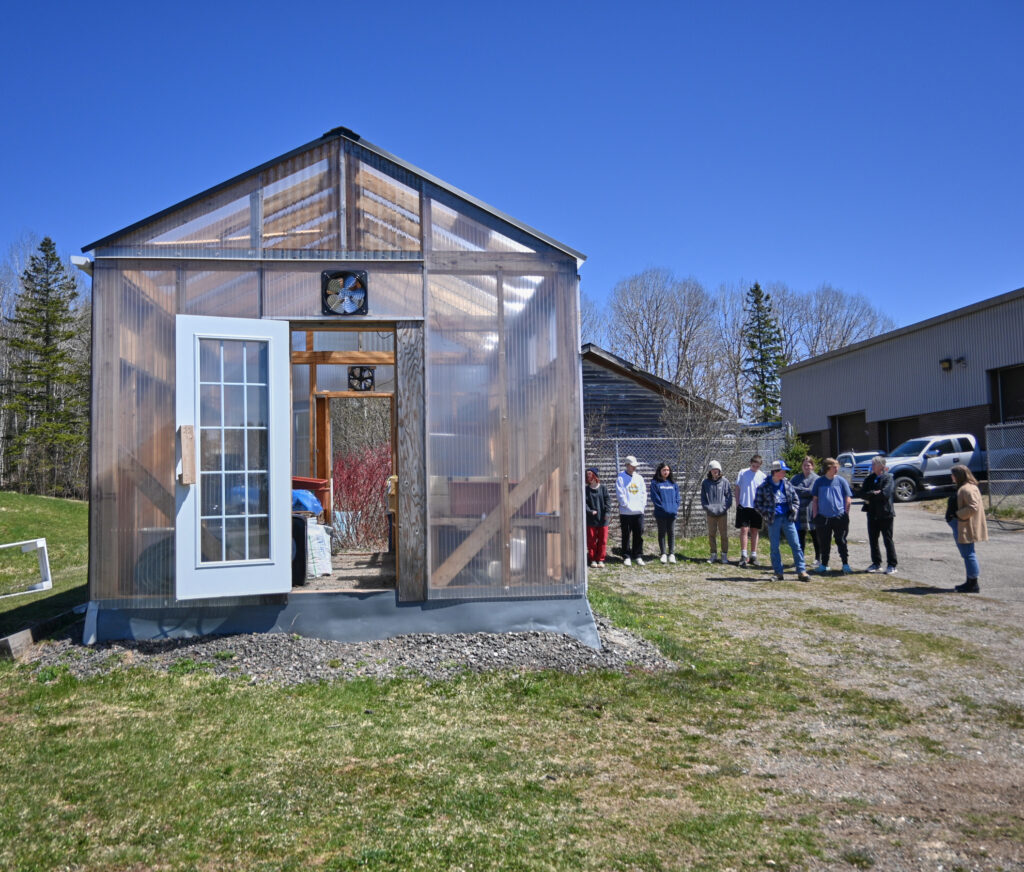
Ms. Giddens’ grade 9 students had constructed a greenhouse last year, and this year’s cohort gave it a few improvements including gutters and a rain barrel for water collection and solar powered fans to regulate temperature. These updates all addressed existing challenges with the greenhouse; solar powered fans cool the greenhouse in the hot summer months when temperatures are too high, and the rain gutters and barrel collect water that can be used for the plants rather than trekking jugs of water from inside the school.
The students also built a solar pop can heater, which they installed on the inside of the greenhouse. Painting the cans black, the pop can heater absorbs heat and directs warm air to the fans, which will allow students to start growing plants as early as April.
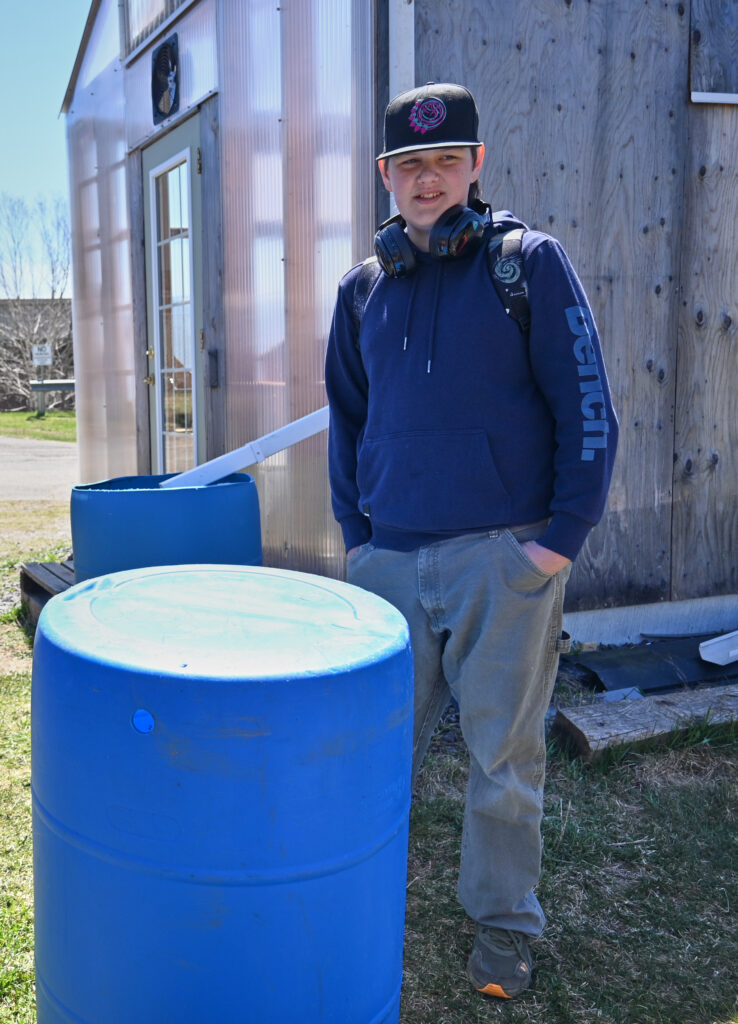
The students explained that for some, it was their first experience constructing anything at all, but a lot of step-by-step information was easily accessed on YouTube. Belleisle High School is located in a small and tight-knit community, and much of the supplies (and some of the know-how) was donated by local citizens. It was heartwarming to hear of how the community supported these projects through donations.
Ms. Giddens doesn’t tout herself as an expert in greenhouse construction, but provides a space for students to explore, experiment, make mistakes, and develop new skills. By establishing this classroom dynamic, Ms. Giddens’ students identified a challenge and implemented their own solution. Through these projects, students can audit electricity use, measure and track local precipitation, and grow vegetables for their school community.
At this point, I thought we were done. But I soon realized that these greenhouse updates were just a few of the projects Ms. Giddens’ students had been working on!
Our next stop was at a small water retention pond that contained school wastewater and rain runoff. Due to its proximity to a local stream, the students questioned if the stream was being contaminated by runoff from the retention pond. So, the students ordered a water testing kit from Water Rangers. They collected a few samples from the stream and sent them to a laboratory for analysis. The results surprised the students; the water was clean (what a relief)!
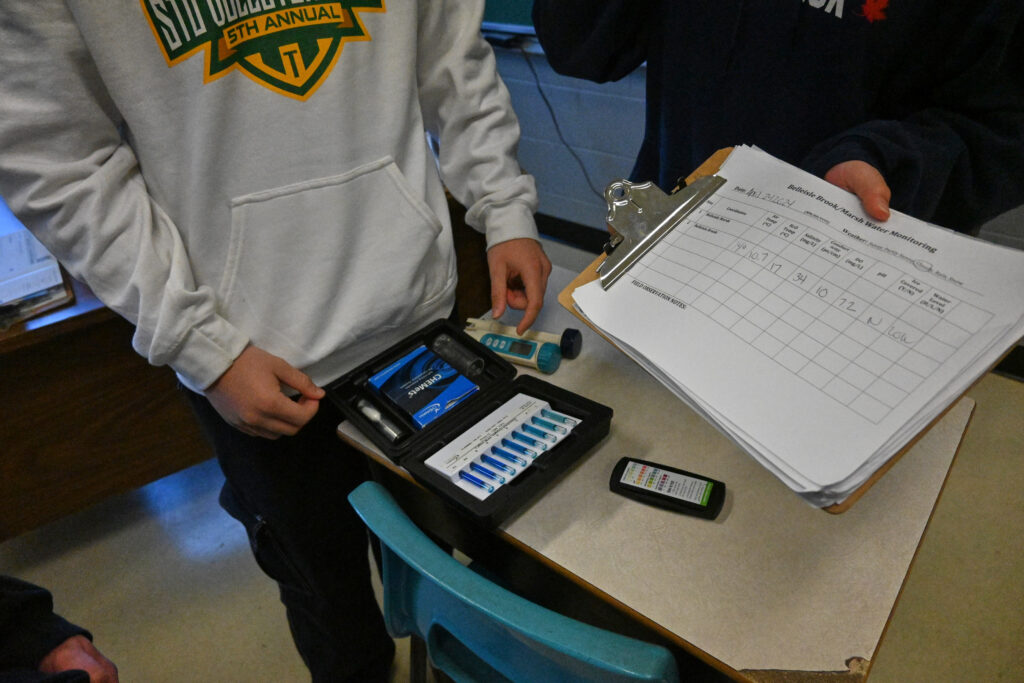
A student shows the water collection and testing kit they received from Water Rangers.
After exploring the outdoor projects, we headed back to class where we discussed one more initiative: aquaponics. At the back of the room were two large fish tanks full of what used to be baby trout, but now looked like hearty fish well on their way to reaching market weight. To keep the fish healthy and growing, the classroom was kept cool, comfortable with a sweater or light jacket. Ms. Giddens assured us that the students didn’t mind or complain, and most had even gotten used to the cooler temperature; a small price to pay for these unique class pets!
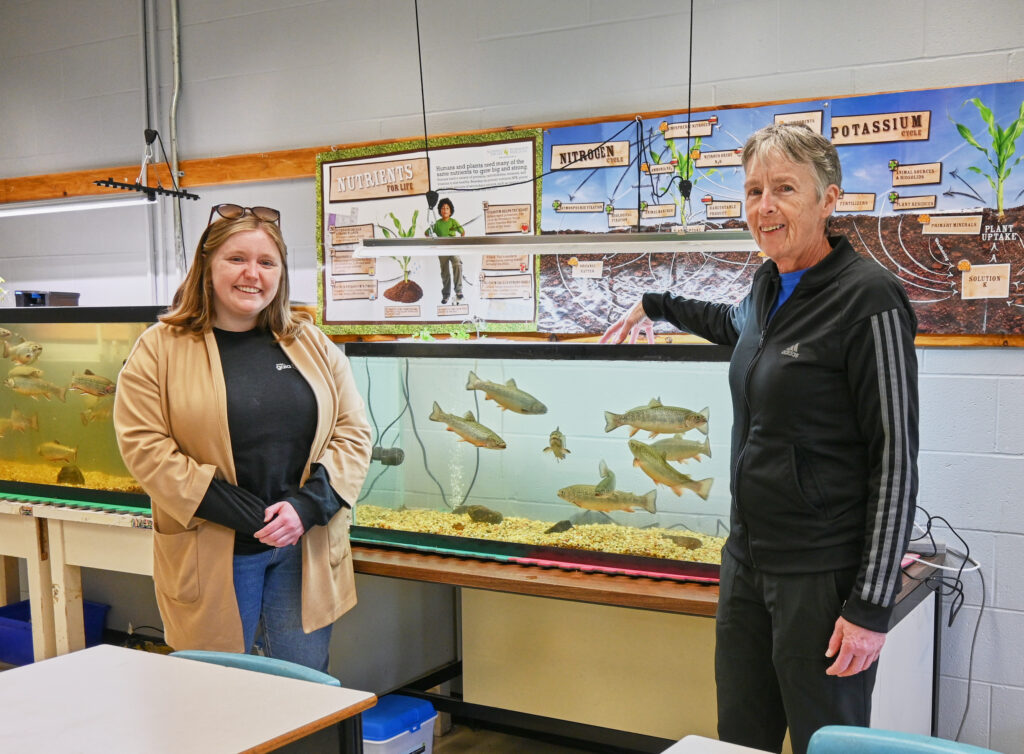
Ms. Giddens explained how she and her students visited a local fish farm and hatchery where they learned about aquaculture and New Brunswick’s fish farming industry. They took a couple dozen baby trout, about 3” long, back to their school to continue their investigation.
Aquaponics is the combination of hydroponics and aquaculture, and the baby trout that Ms. Giddens’ students adopted were going to play a key role in this project. The students explored how fish waste can fertilize plants, who in turn clean the water for the fish. This symbiotic relationship is a sustainable method in growing both vegetables and fish for consumption.
At this point I know what you might be thinking. What will students do with the fish at the end of the school year? The answer is simple: a school-wide fish taco supper! What better way to celebrate the efforts that these students have made throughout the school year than to come together for a shared meal. Environmentalism isn’t just about protecting nature or investing in a green economy; environmentalism is for everyone. It’s about investing in the community, building positive relationships, and advocating for inclusivity. When I heard that the students would be sharing their harvest and inviting their school community to celebrate their success, it really felt like their projects came full circle from environmental science to climate justice.
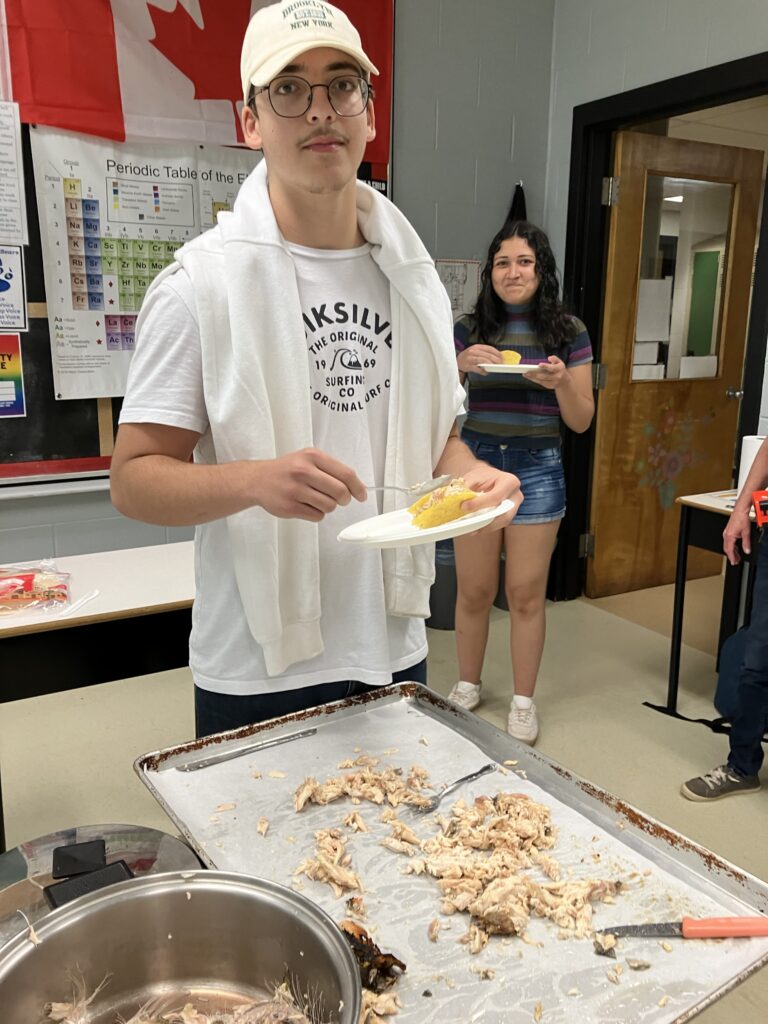
Two students enjoying fish tacos made with the fish they raised throughout the school year.
Not all Climate Action Project programs dive this deep into school projects, and that’s okay. These types of projects require a great deal of budget (or in this case, community donations), commitment, and school-wide support. But even simple CAP projects are a valuable starting point and allow students to participate in important climate discussions with an action-oriented mentality. Ms. Giddens’ students are not your average grade 9 science class, and we are so impressed with the work they’ve achieved. But simple projects can still be a valuable learning experience (Bristol board and glitter glue can also be fabulous) and can lay a foundation for students to be climate leaders in their community for years to come.
Interested in bringing a Climate Action Program into your class this year? Visit our website to complete a request form for either CAP-Science or CAP-Justice, or reach out to contact@thegaiaproject.ca to learn more about how the CAP program can benefit your students and school.
Author: Katelyn Plant, Marketing & Communications Manager, The Gaia Project
Follow us on social for more stories, news and updates:
Facebook: www.facebook.com/gaiaproject
Instagram: @thegaiaproject_
Twitter: @gaiaproject
LinkedIn: @thegaiaproject-projetgaia
TikTok: @thegaiaproject_